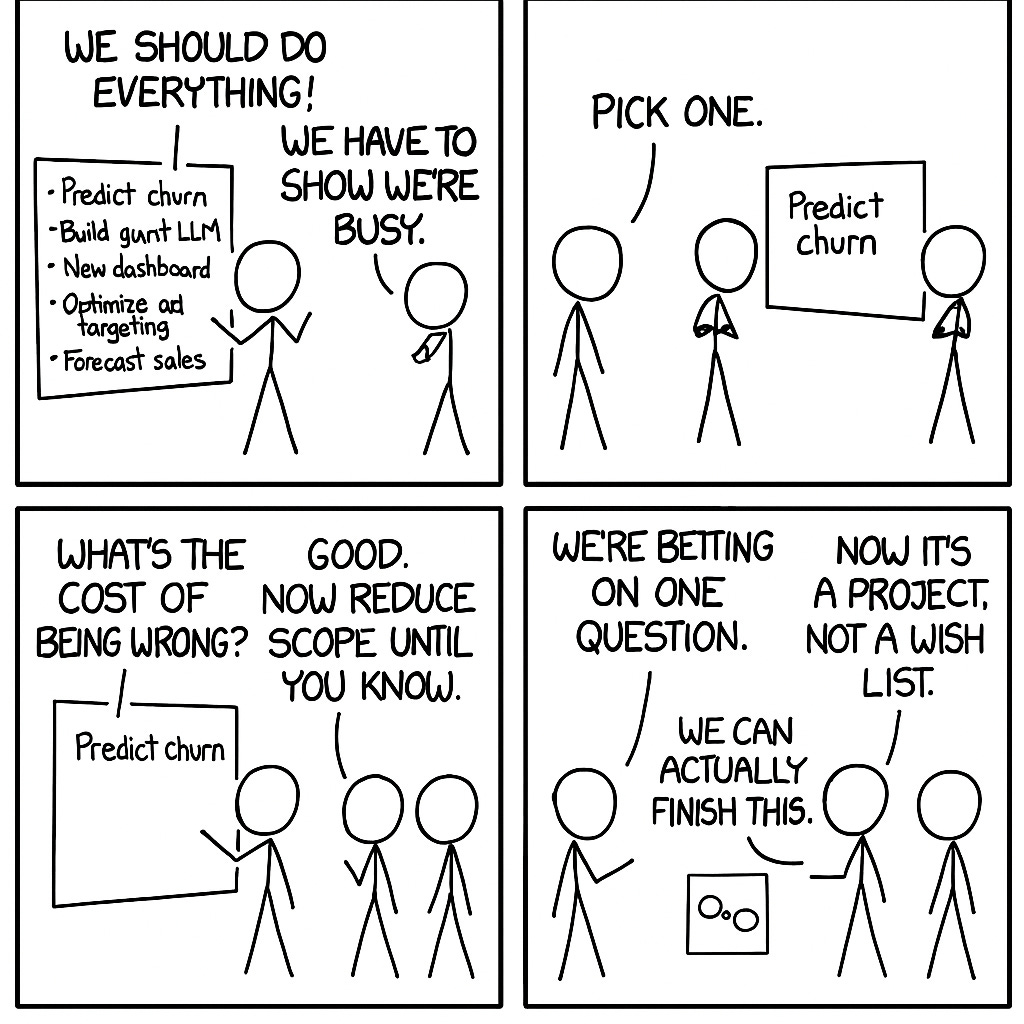We talk about scale all the time. More data… more models… more dashboards. But data science teams don’t fail because they can’t sign up for enough work. They fail because they don’t deliver what they already promised or deliver against critical problems. Scope creeps, roadmaps get crowded… But in the end what actually ships?
When a project slows down, the instinct is to add features, people, or meetings. Complexity feels like progress. It reassures us that we are doing something.
Complexity often hides that no one is making the hard call about what really matters.
The real work of management is reduction and focusing on the correct bets. We create leverage through subtraction. We remove noise so the team can focus on delivering. If you can’t say clearly what your team is delivering, for what team, and by when, you are not managing. You are just watching.
Constraints make work real. Limiting scope forces decisions. Trade-offs become visible. You can’t hide behind “it’s almost ready” or “just one more thing.” Work is either done or not. The difference between shipping and endless planning is the willingness to cut what is not essential.
Projects > wish lists
Plans fail because they avoid the hard questions. They aim for consensus with ambiguous language. That approach protects people from accountability and preserves comfort. Real planning reduces that comfort. It demands clarity and forces trade-offs early…. (healthy) conflict upfront.
Here is one way to structure planning questions so it actually leads to delivery:
Applying this approach requires more than asking questions in a meeting. It is about building a culture where constraints are expected and decisions are owned.
Start by working through these questions as a group. Write down the answers in plain language (you have to push for specificity…. don’t accept placeholders) If people can’t answer, that’s a sign the work is not ready to be done yet.
Use these answers to set scope. Don’t allow scope to drift without revisiting the trade-offs. Make the timeline real. Track progress against what was actually promised not an idea of “progress.”
This is not a one-time exercise. Good teams treat planning as continuous work not a kickoff. Make space for it on purpose. Run biweekly meetings to review scope, ask the hard questions again, and keep priorities clear. Set a target to deliver meaningful outcomes every month.
Build the habit of confronting trade-offs early when change is cheap.
Show that saying no is a responsible decision.
Reward clarity over enthusiasm. Celebrate work that ships even if it’s smaller than the ideal plan.
This approach doesn’t mean lowering ambition. It means raising the standard for what counts as real progress.
Instead of building a perfect forecasting model for every possible metric, you deliver one forecast in production that the business can actually use. Instead of promising ten dashboards, you deliver one that changes a decision.
In the end, planning is not about filling everyone’s capacity. It is about making sure the work that matters actually ships.



